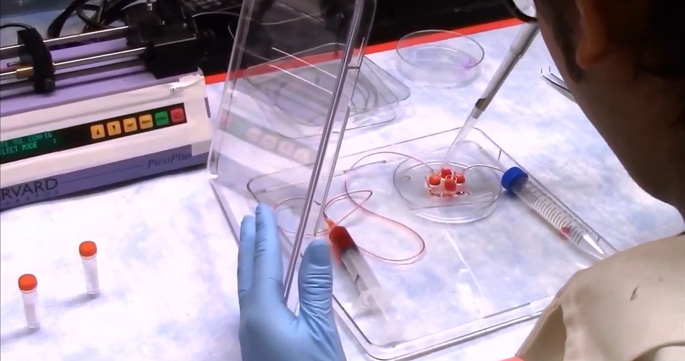
by Kelsey Herbers
Several environmental toxicants are known to have a negative impact on the function of the human reproductive tract, and when these toxicants are transferred from mother to child, the consequences can extend to up to three generations of future pregnancies.
With new funding from the Environmental Protection Agency, Kevin Osteen, PhD, Pierre Soupart Professor of Obstetrics and Gynecology at Vanderbilt, and colleagues hope to identify factors that may make humans more susceptible to toxicant exposure — specifically the presence of pre-existing inflammatory disease.
Previous research from Osteen’s lab demonstrated the risk of developing endometriosis, an inflammatory reproductive tract disease in women, is associated with populations and individuals who were previously exposed to environmental toxicants.
Women who had endometriosis had a reduced sensitivity to the hormone progesterone, which stabilizes the maternal-fetal interface until the end of pregnancy. This lack of stabilization limited their fertility and increased their risk of preterm birth.
If individuals at greater risk of toxicant exposure are identified early, nutritional and pharmacologic interventions in the preconception period can reduce — or potentially even eliminate — the risk of preterm birth.
Osteen’s lab will use a three-dimensional organ-on-a-chip cell model of the maternal-fetal interface to examine how pre-existing inflammatory disease affects cellular responses to an environmental toxicant.
The devices are microfluidic, allowing a constant flow of fluids that mimics internal organ systems, and they consist of the primary cells that simulate tissue and organ-level physiology.
Because of this technology, organ-on-a-chip models can provide accurate, reproduceable readouts of disease/toxicant-associated cellular responses and may be more predictive of human exposure than animal models or basic tissue models.
“These devices allow us to do more accurate in-vitro human studies that could never be done in people,” said Osteen. “We hope to reduce the dependency on animals and be more predictive in the process to give people better information about their health and what they can do about it.”
The team will also examine disease-toxicant interactions through biosensors, which can sense changes in the enzymes that break down the tissue at the end of pregnancy. Researchers will be able to determine when and how rapidly those enzyme levels begin to rise under the influence of a toxicant, disrupting progesterone’s ability to stabilize the fetal membrane.
Another aim of the study is to determine whether a more universally available version of the organ-on-a-chip device can be built to eliminate reliance on complex cell types that may not be available to non-specialty labs.
The team will conduct case studies to see if the same risk assessment can be mirrored without the more complicated technologies available at VUMC.
Most of the toxicants Osteen’s team studies are related to combustion and incineration, with exposures ranging from close proximity to coal fire plants and forest fires to charred meats eaten off the grill. Geographic location can make a difference, though weather patterns can carry toxicants thousands of miles from their source.
“In Belgium, industrial oils were accidentally used in animal feed, so these toxicants entered the food chain. Breastmilk in Belgium has the highest level of these toxicants in the world, and their rate of endometriosis is almost double that of the U.S.,” said Osteen. “Where you live and the processes that occur around you might dictate your individual risk.”
Aside from assessing toxicant interactions, Osteen hopes the organ-on-a-chip devices can be expanded to other uses, including testing new pharmaceuticals that may be helpful during pregnancy. Many medications have never been tested in pregnant women due to potential risks to the child.












